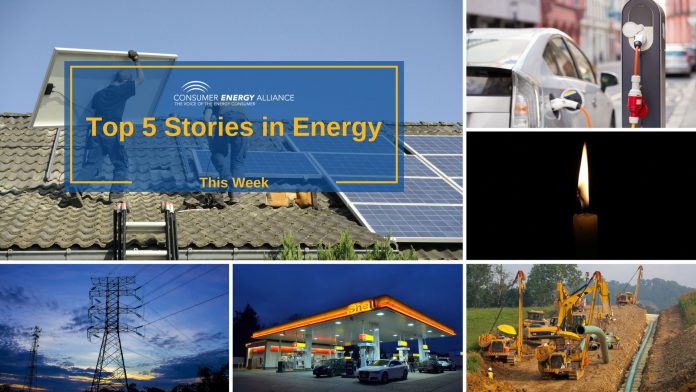
Last week saw some big headlines. A man named Rich stole a plane from an airport in Washington, Kim yelled at Kourtney in the season premiere of the Kardashian’s reality show, a 14-year-old announced he was running for Governor in Vermont, and a teen accused the famed Mayo Clinic of kidnapping. While these stories made headlines for their sensational tales, we picked a few out from the energy category that you may have missed under these attention-grabbers.
Despite high production levels in the Lone Star State, drivers are facing the highest prices at the pump since 2014, and this situation is expected to continue through the end of the year. According to a recent survey of Texas gas stations released by the American Automobile Association, the statewide average for unleaded gas reached $2.62 per gallon in the second week of August, and there is an expectation of higher prices if demand continues throughout the month. Many analysts believe that driving patterns should slow down in September, thereby providing an opportunity for lower prices.
In the not so distant past, West Virginia construction companies were forced to take jobs out-of-state to make ends meet. Ranking in at #51, behind Washington D.C., West Virginia struggled to bring jobs to their state due to lack of funding and development. Now, thanks to increased natural gas development, new pipeline projects, and West Virginia’s $2.8 billion “Roads to Prosperity” campaign, the state has seen a 14.4% increase in construction employment – bringing workers back to the state and leading the country for construction industry job growth.
Residents of the Pine Tree State are just a few months away from having to worry about heating oil again, and although they may get some relief this winter, they may be better off with propane gas heating. According to the Maine Energy Office, the state average of $2.72 per gallon has been steady over the last few months, and it is as low as $2.39 in the central region. Propane gas prices are currently lower, and analysts believe that they may come down even more ahead of winter thanks to steady shale gas production across the United States.
More than 1,500 commercial and residential customers of Duke Energy have taken advantage of a special rebate program for solar panel installations, which started just a couple of months ago. The incentives are based on the purchase and installations costs, and they could be as high as $6,000 in some cases. Duke Energy executives have been working with state officials as part of a plan to turn North Carolina into a solar energy leader. Average households can save about $100 per month after the solar panels are installed; this savings is enhanced by selling unused electricity to Duke Energy for credit.
Tech giant Google is working on an artificial intelligence project that will manage smartphone battery life to maximize energy efficiency, and a Russian company unveiled an iPhone modification that will provide a full charge with just a few minutes of sunlight, but the reality of solar-powered mobile devices is not ready for the market. The Russian “iPhone X Tesla” is priced at more than $4,000, and the Google project requires considerable processing power; however, smartphone users are increasingly buying portable battery packs equipped with solar energy cells. The FLOUREON battery pack, for example, has a 10,000 mAh capacity that will recharge an Android smartphone a couple of times, although the process could take a few hours. This charger costs less than $25 and is rugged for outdoor use; it even features a backpack clip for recharging while hiking.














